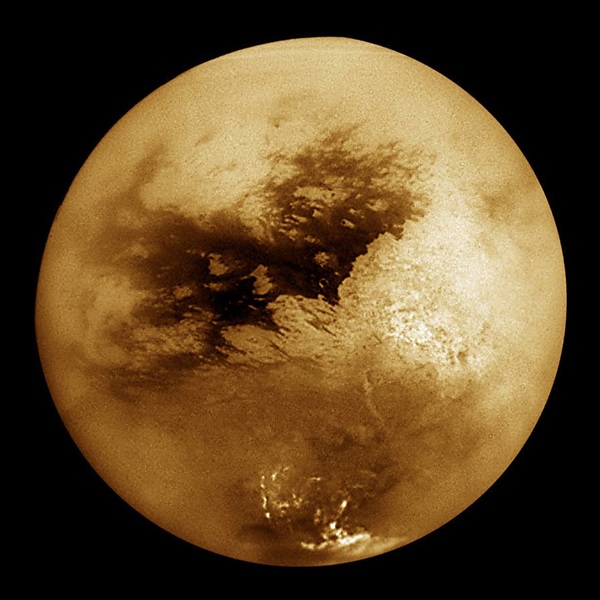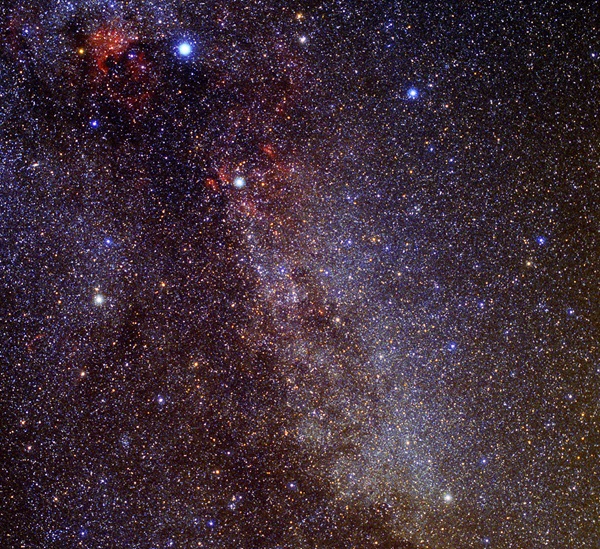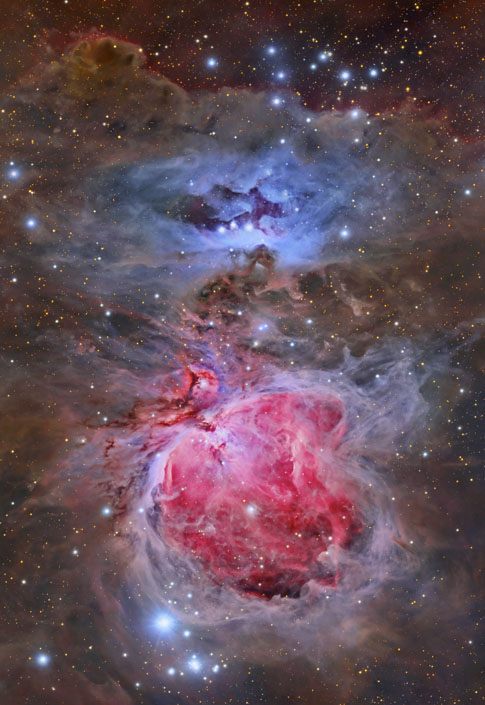
Yes, chemistry and conditions exist on Titan that could theoretically give rise to life.

Yes, chemistry and conditions exist on Titan that could theoretically give rise to life.

MOA-2007-BLG-192L, is the leading candidate for the smallest hydrogen-burning “normal” star known.

No. NASA’s space shuttle fleet is scheduled to go out of service in 2010. And after that, neither the United States nor any other nation will have a space vehicle capable of returning such a large piece of equipment to Earth.

Four centuries ago, the Italian astronomer Galileo Galilei opened up the universe with his telescope. Among his discoveries were mountains and craters on the Moon, four bright satellites orbiting Jupiter, and the changing phases of Venus — all of which contradicted the common belief of a perfect Earth-centered universe.

Jupiter and Mars draw the top headlines in December’s evening sky. But while Jupiter is nearing the end of its current evening visibility, Mars is just beginning. Mercury joins the action right after sunset starting the second week of the month.
The Neutron Spectrometer flying aboard NASA’s MESSENGER spacecraft recorded the event, giving scientists a first-ever, up-close look at neutron production from a solar flare. In fact, it was the first time scientists detected solar neutrons at less than 1 Astronomical Unit (AU) from the Sun.
An Astronomical Unit is the average distance between Earth and the Sun — about 93 million miles.
When the flare erupted, MESSENGER was flying at about half an AU, said William C. Feldman, a senior scientist at the Tucson-based Planetary Science Institute
Feldman also is the co-investigator for the Neutron Spectrometer, which is one of two sensors on MESSENGER’s Gamma-Ray and Neutron Spectrometer instrument.
For the first time, scientists were able to directly observe the neutron output from an average-sized solar flare, Feldman said. Previously, only the neutron bursts from the most powerful solar flares have been recorded on neutron spectrometers on Earth or in near-Earth orbit, he said. These bursts typically last about 50 to 60 seconds on the Sun.
“But we recorded neutrons from this flare over a period of six to ten hours,” Feldman said. “And what that’s telling us is that at least some moderate-sized flares continuously produce high-energy neutrons in the solar corona.”
“From this fact, we inferred the continuous production of protons in the 30-to-100-million electron volt (MeV) range due to the flare,” he said.
About 90 percent of all ions produced by a solar flare remain locked to the Sun on closed magnetic lines, but another population results from the decay of the neutrons near the Sun. This second population of decayed neutrons forms an extended seed population in interplanetary space that can be further accelerated by the massive shock waves produced by the flares, Feldman said.
“So the important results are that perhaps after many flare events two things may occur: continuous production of neutrons over an extended period of time and creation of seed populations of neutrons near the Sun that have decayed into protons,” he said. “When coronal mass ejections (nuclear explosions in the corona) send shock waves into space, these feedstock protons are accelerated into interplanetary space.”
“There has always been the question of why some coronal mass ejections produce almost no energetic protons that reach the Earth, while others produce huge amounts,” he said. “It appears that these seed populations of energetic protons near the Sun could provide the answer, because it’s easier to accelerate a proton that already has an energy of 1 MeV than a proton that is at 1 keV (the solar wind).”
The seed populations are not evenly distributed, Feldman said. Sometimes they’re in the right place for the shock waves to send them toward Earth, while at other times they’re in locations where the protons are accelerated in directions that don’t take them near Earth.
The radiation produced by solar flares is of more than academic interest to NASA, Feldman said. Energetic protons from solar flares can damage Earth-orbiting satellites and endanger astronauts on the International Space Station or on missions to the Moon and Mars.
“People in the manned spaceflight program are very interested in being able to predict when a coronal mass ejection is going to be effective in generating dangerous levels of high-energy protons that produce a radiation hazard for astronauts,” he said. To do this, scientists need to know a lot more about the mechanisms that produce flares and which flare events are likely to be dangerous. At some point they hope to be able to predict space weather — where precipitation is in the form of radiation — with the same accuracy that forecasters predict rain or snow on Earth.
MESSENGER could provide significant data toward this goal, Feldman said. “What we saw and published is what we hope will be the first of many flares we’ll be able to follow through 2012,” he said. “The beauty of MESSENGER is that it’s going to be active from the minimum to the maximum solar activity during solar cycle 24, allowing us to observe the rise of a solar cycle much closer to the Sun than ever before.”
MESSENGER is currently orbiting the Sun between 0.3 and 0.6 AU on its way to orbit insertion around Mercury in March 2011. At Mercury, it will be within 0.45 AU of the Sun for one Earth year.

As Christmas nears, go outside around 8 p.m. and look for a large, striking crucifix of stars standing right above the west-northwest horizon. It is a sight to behold and a powerful symbol to ponder.

Ever since neutrino physics took off in the 1970s, scientists have built detectors to find the elusive particles. And the detectors just keep getting bigger and bigger. Here is a list of many neutrino detectors — the past, present, and future. They range in size, material, and detection method.

In the December 2009 issue of Astronomy magazine, I suggested 10 celestial objects that make good targets for beginners. As photo editor for the magazine, I see many great shots of the clusters and nebulae that I listed. We created this page so I could share a few more with you.

The more I think about it, the more I am convinced the International Year of Astronomy (IYA) is meant for the world’s amateur astronomers. Even its goal — to show the world that the universe is “yours to discover” — is designed to inspire people unfamiliar with astronomy to take their first looks skyward.

Through countless centuries, a frustrating mystery sprawled across the sky: What was that strange glowing band? Mesoamericans pictured it as the path to heaven taken by the dead. Medieval Europeans called it Via Galactica, the “milk road.”

Learn more about Rocky Kolb.